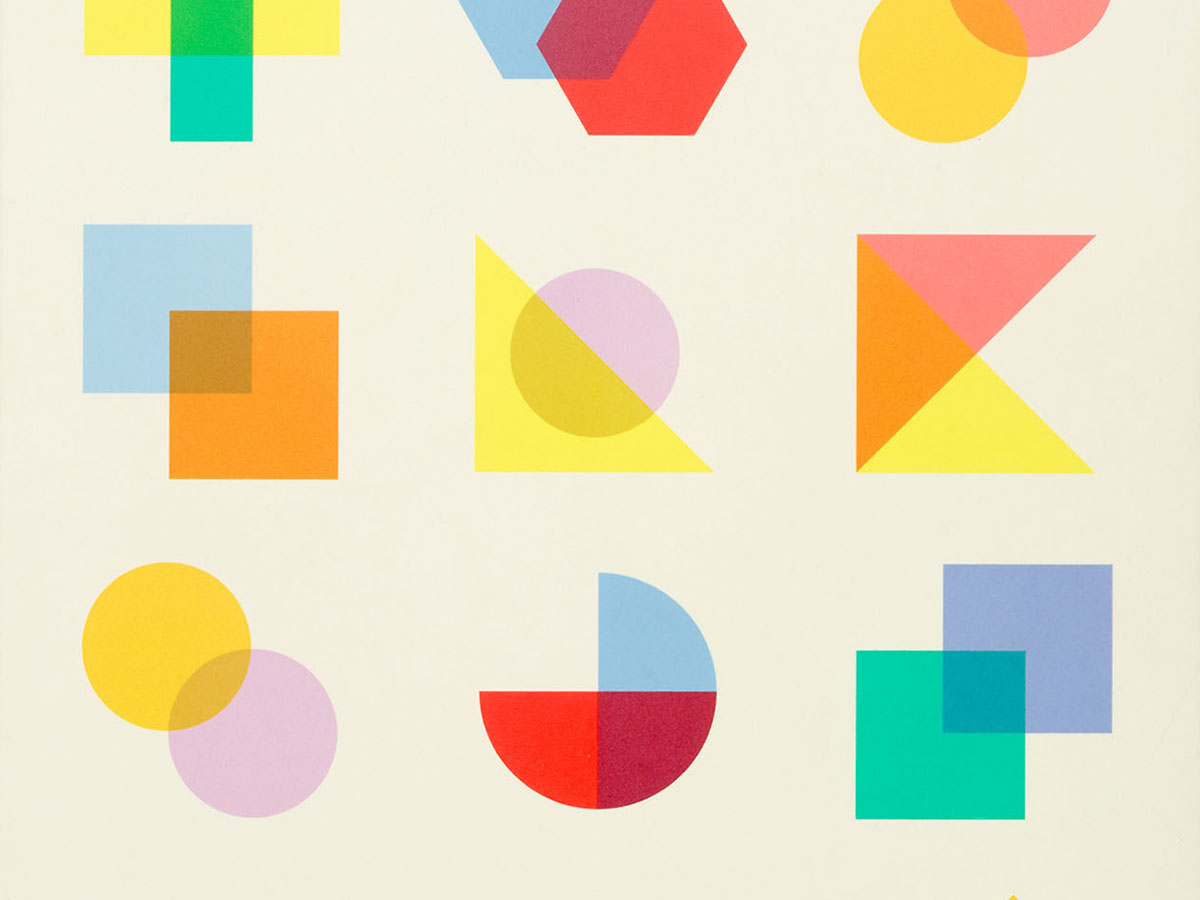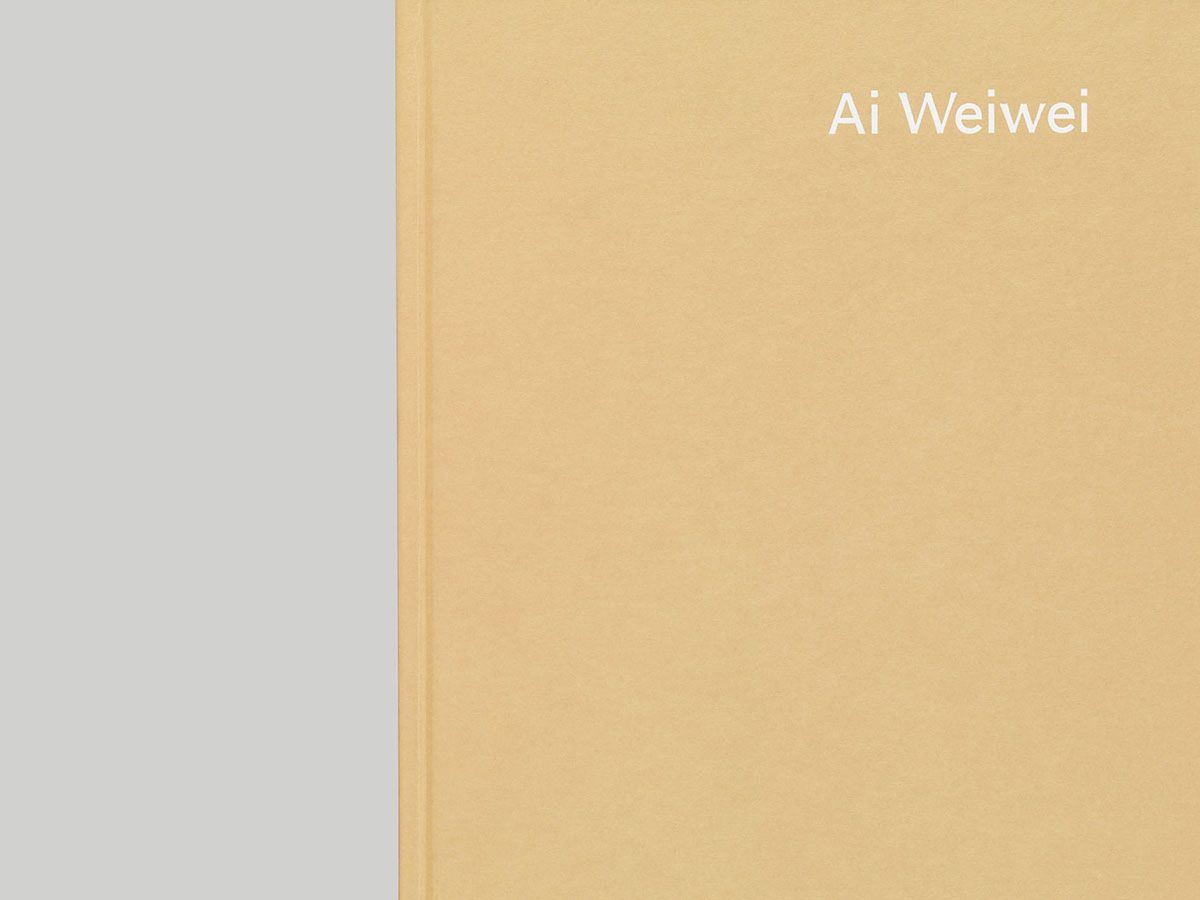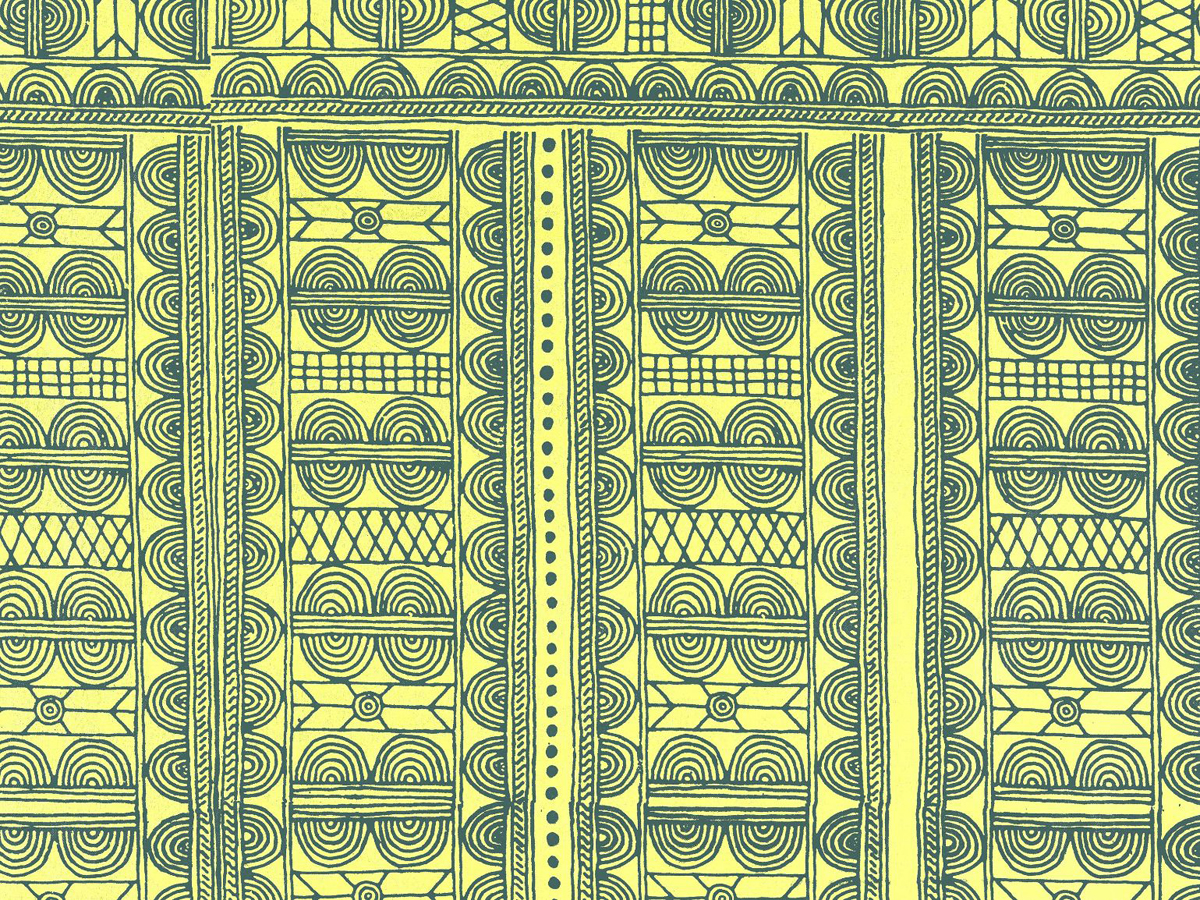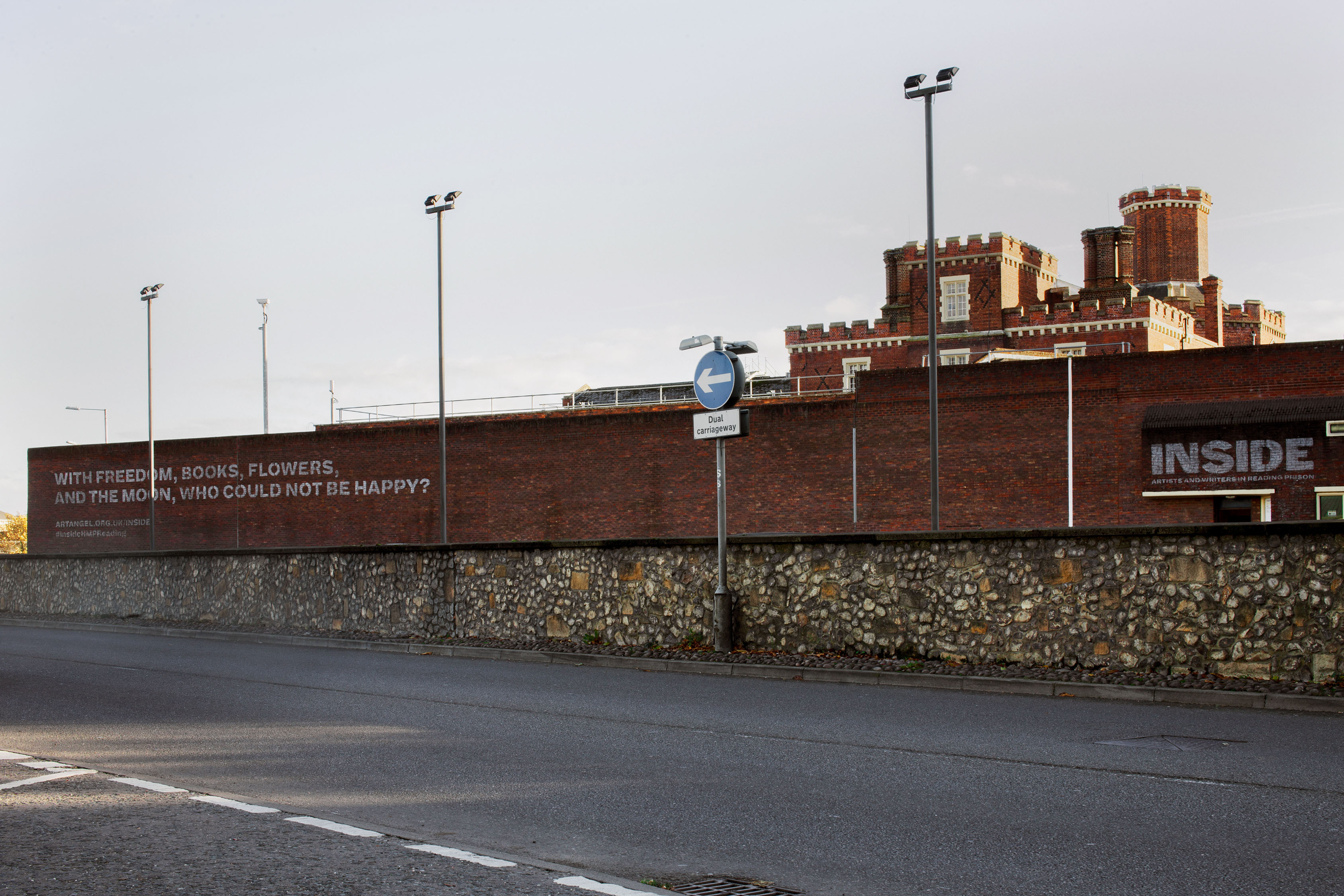

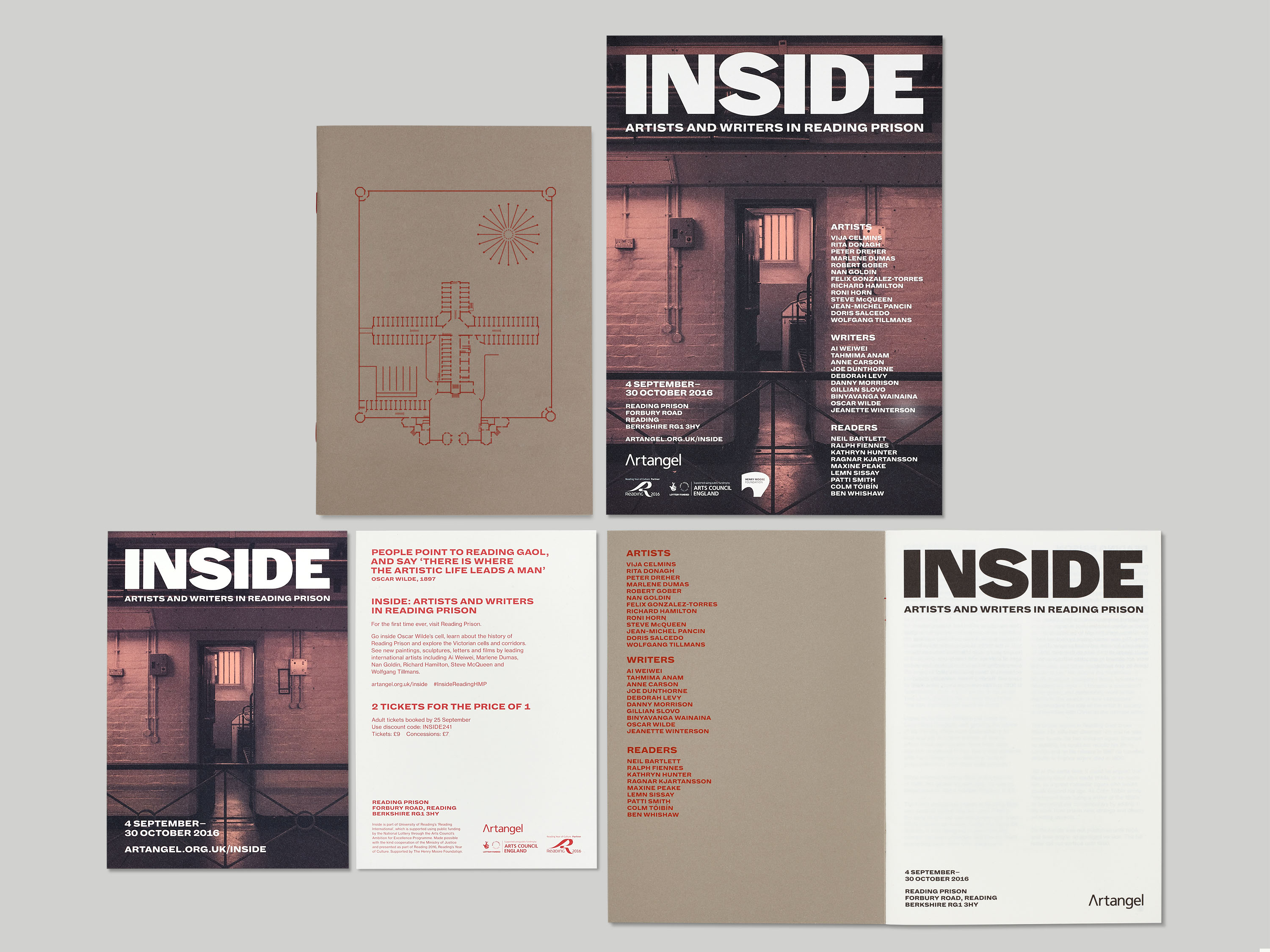
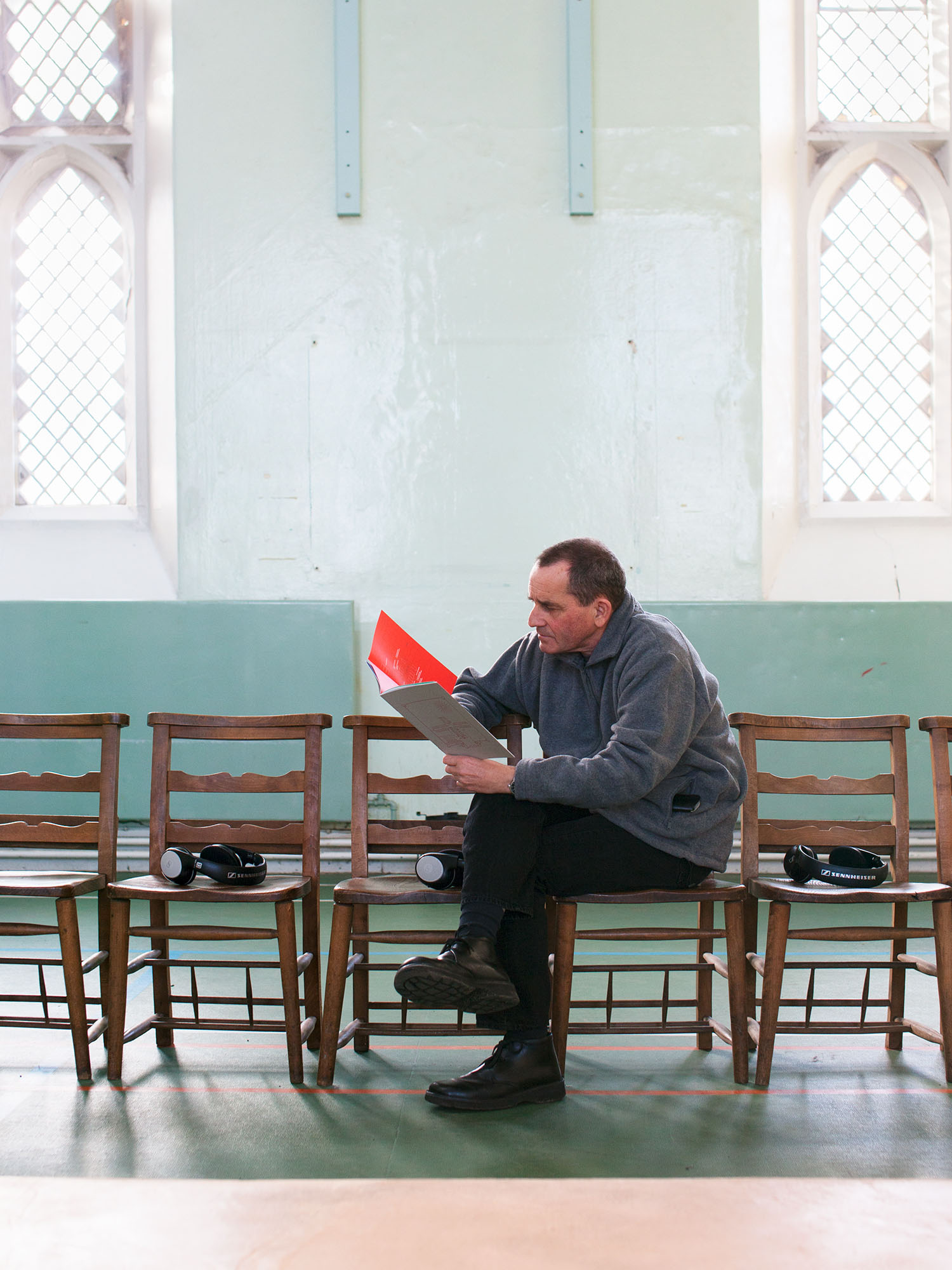

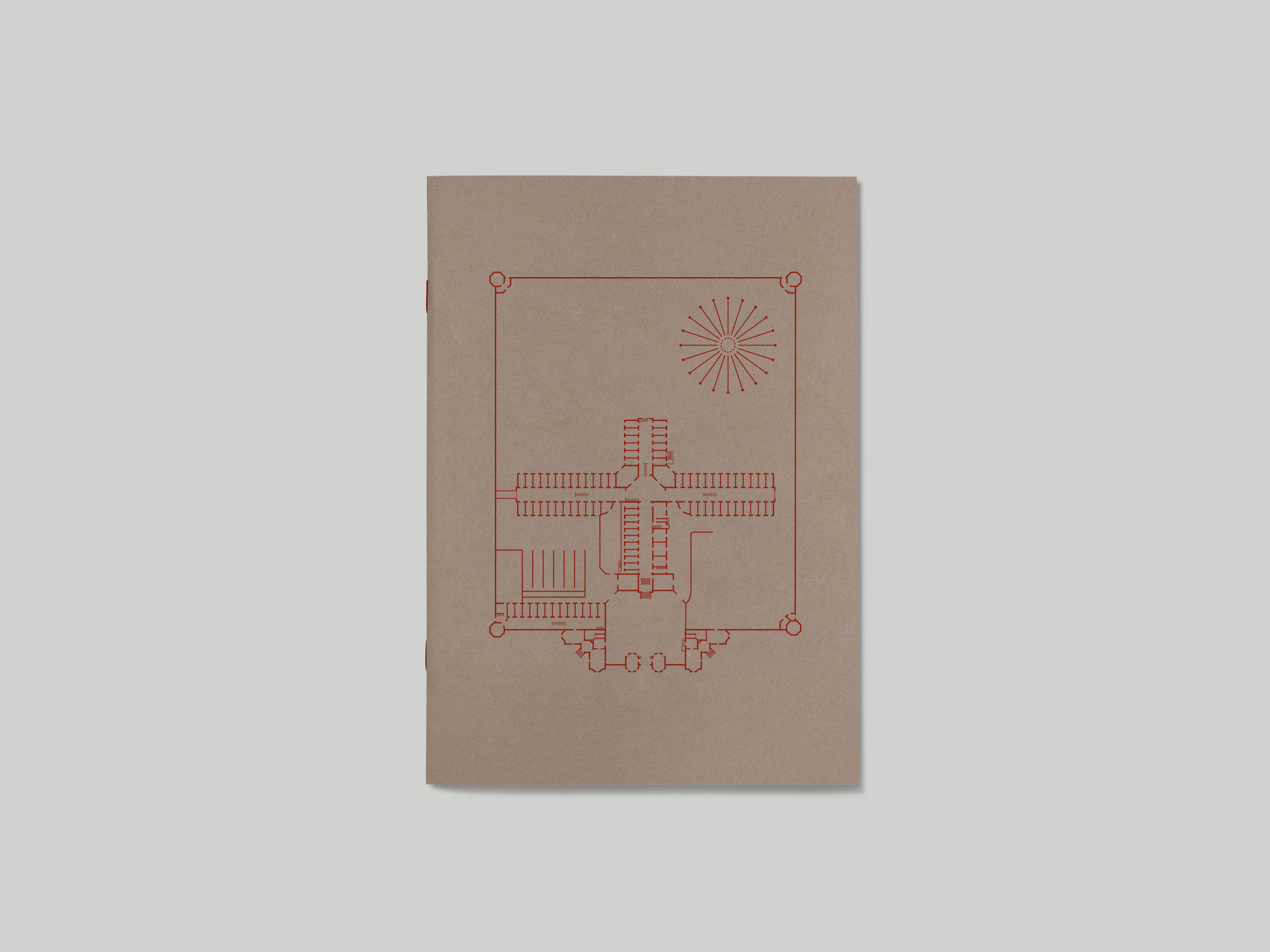

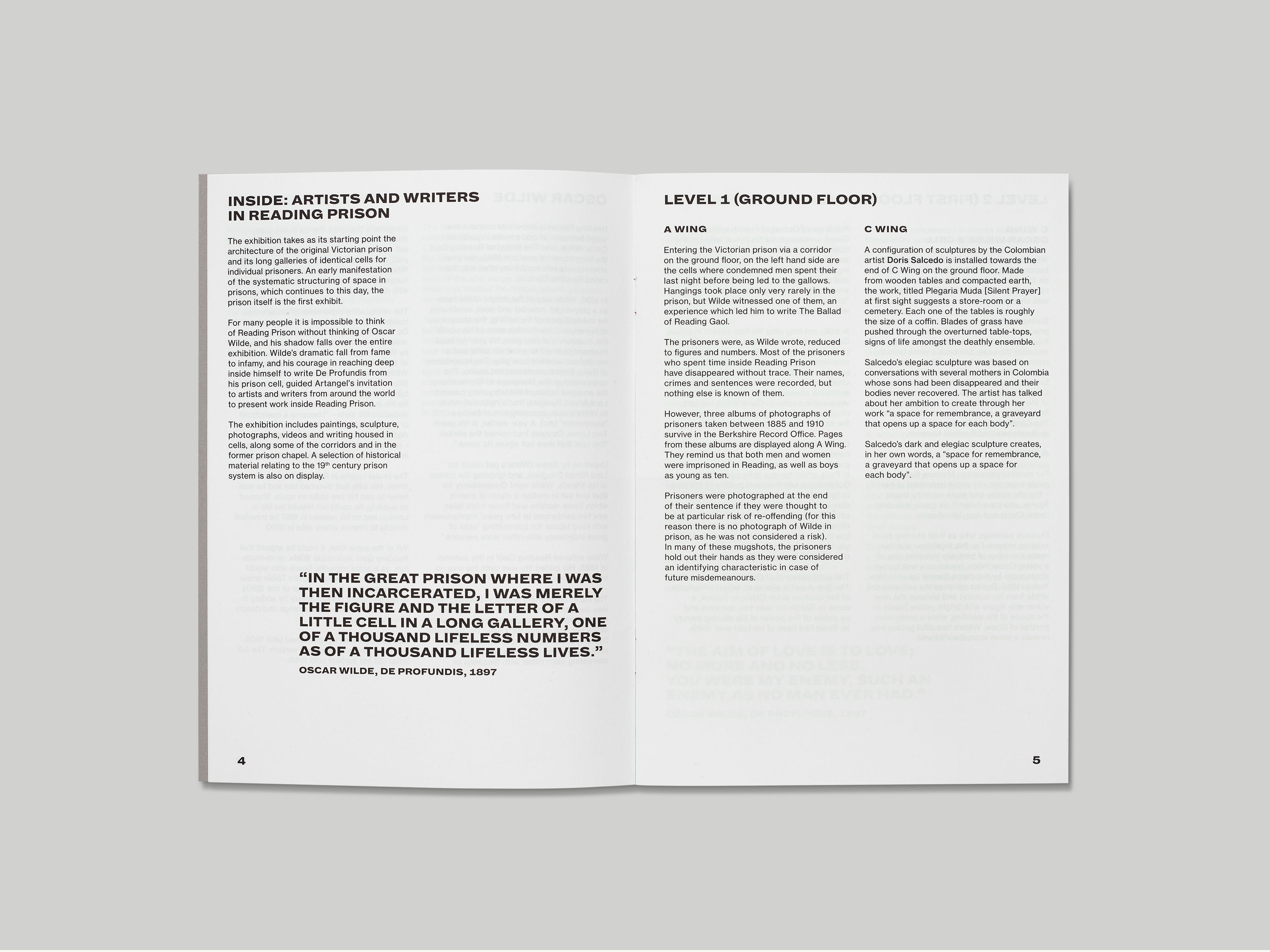
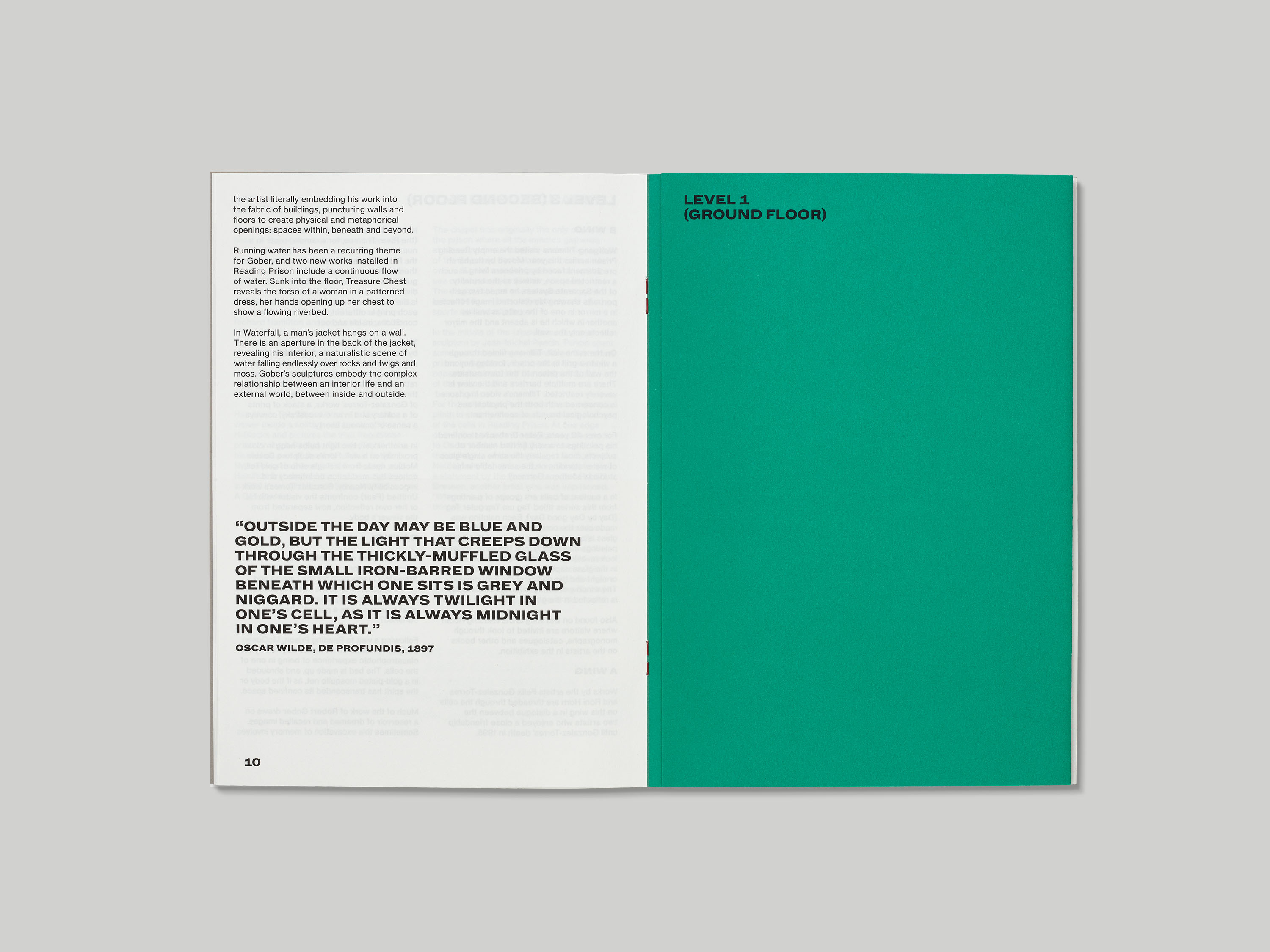

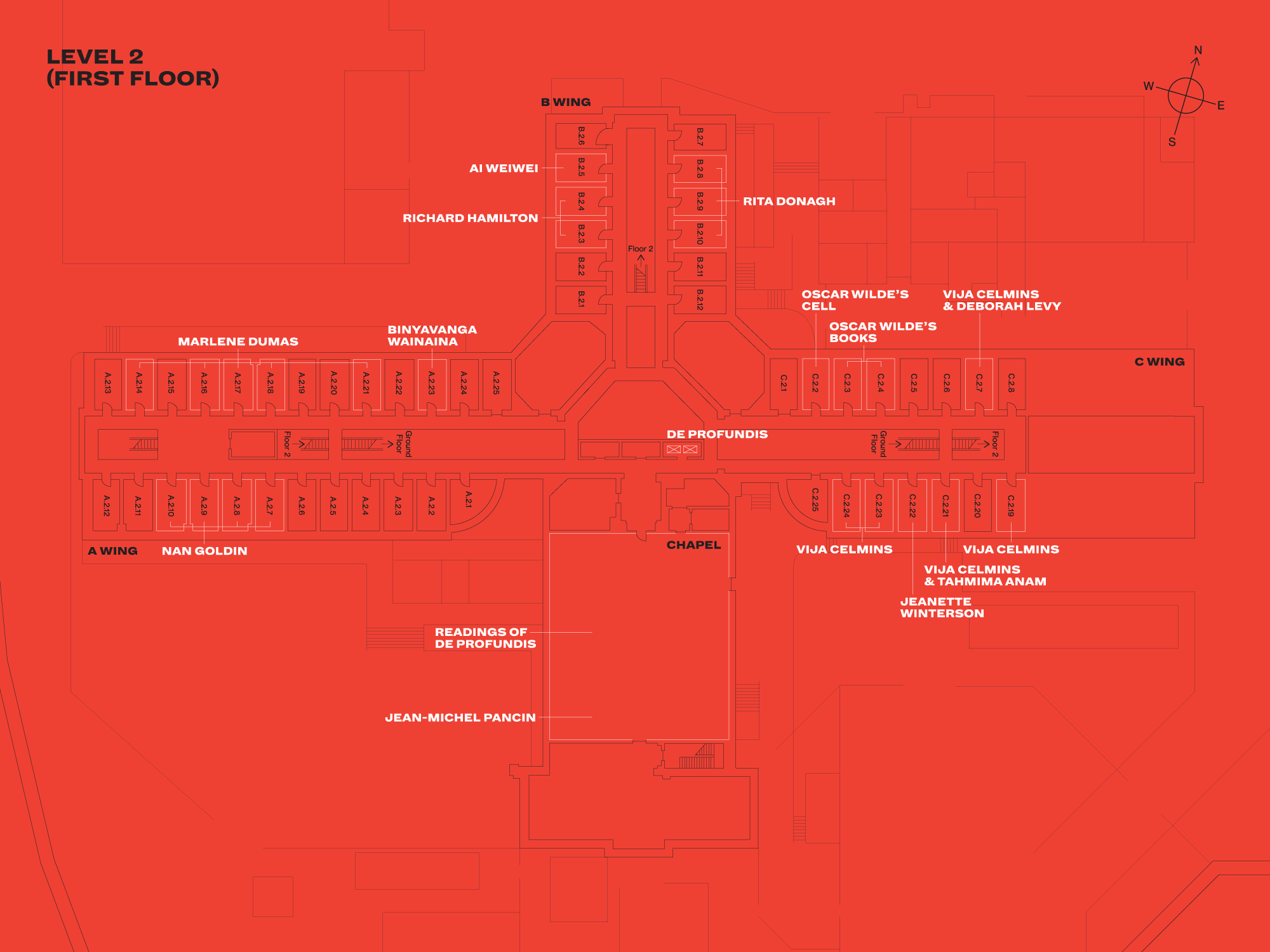


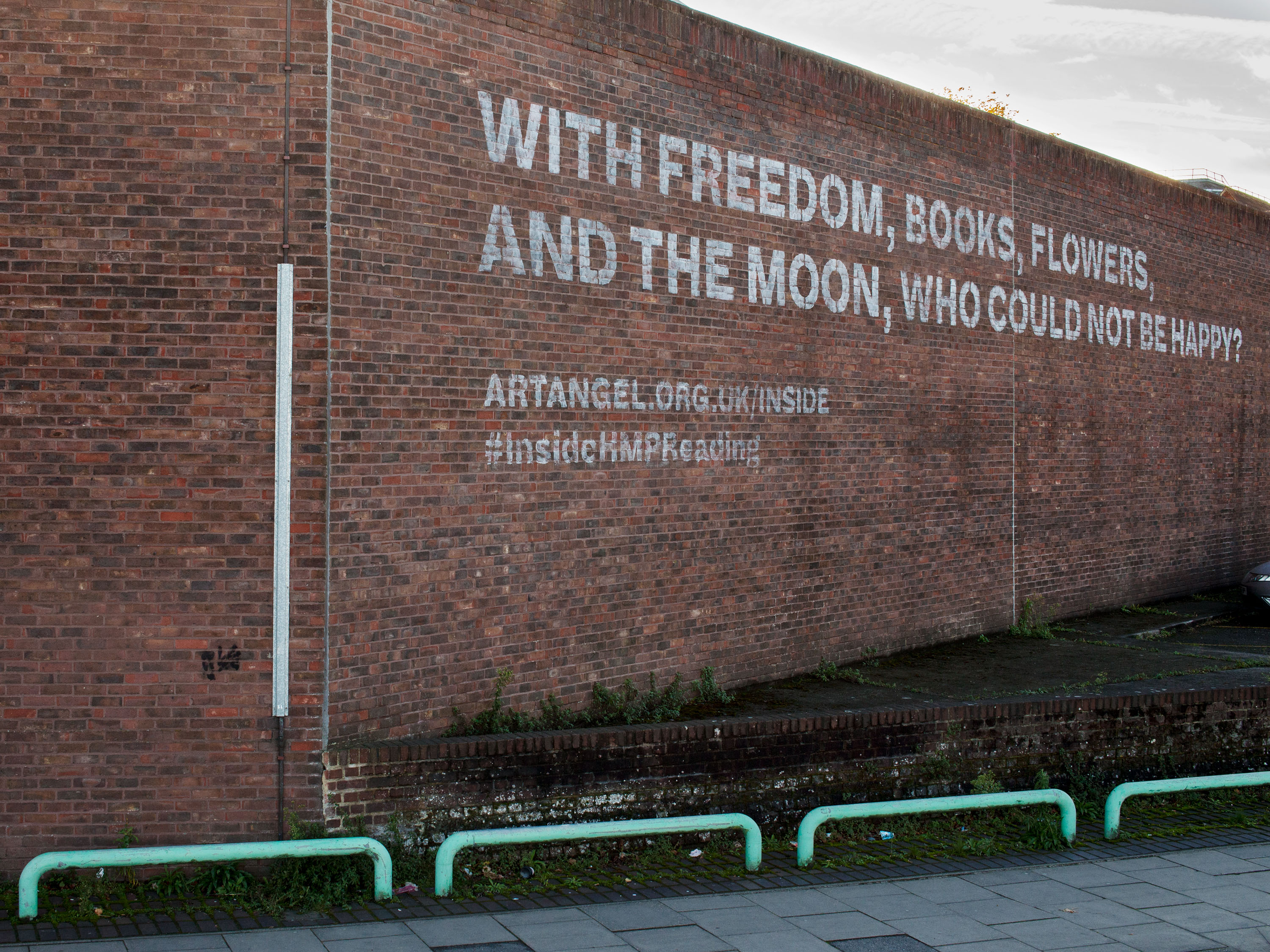
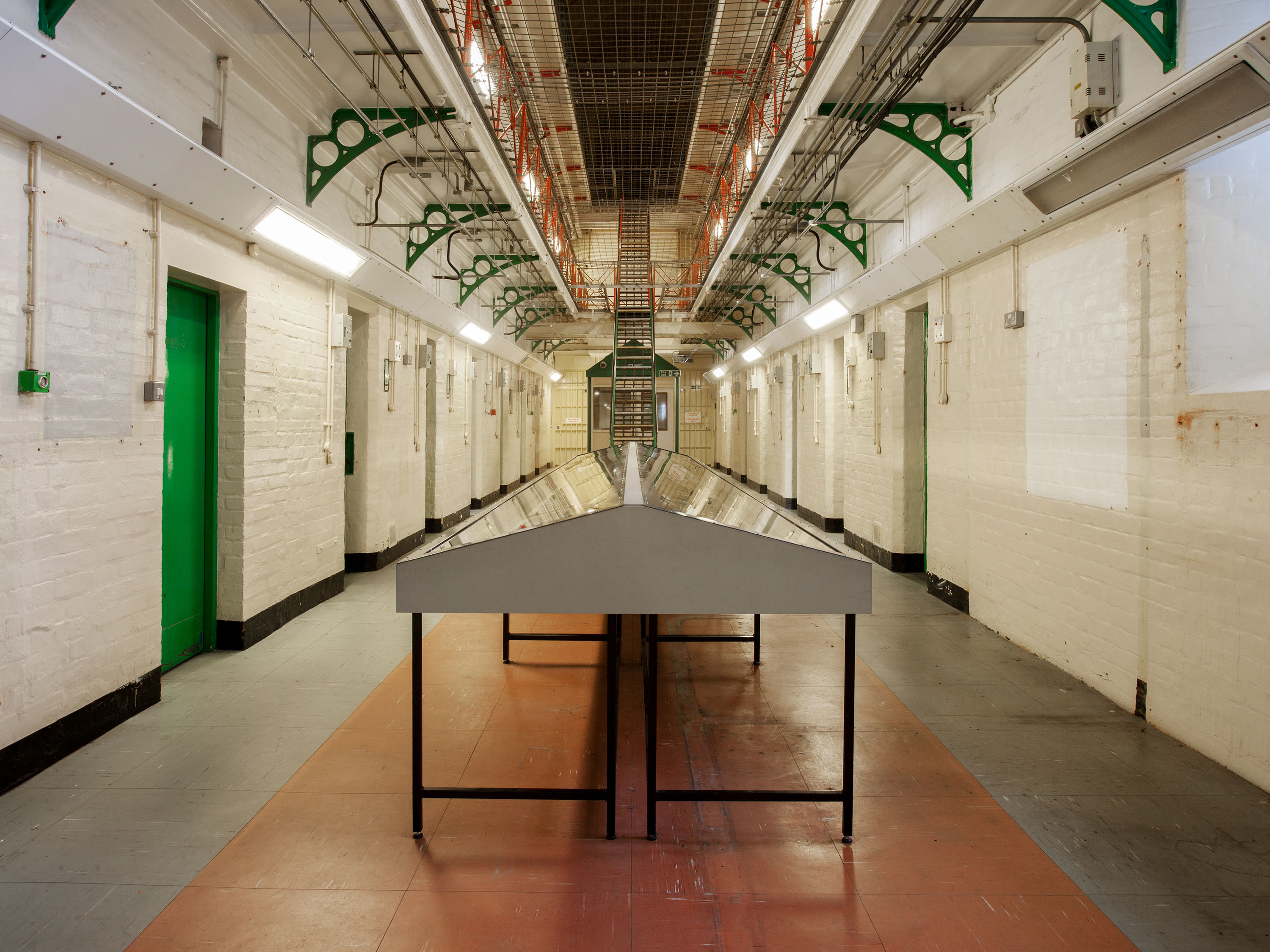
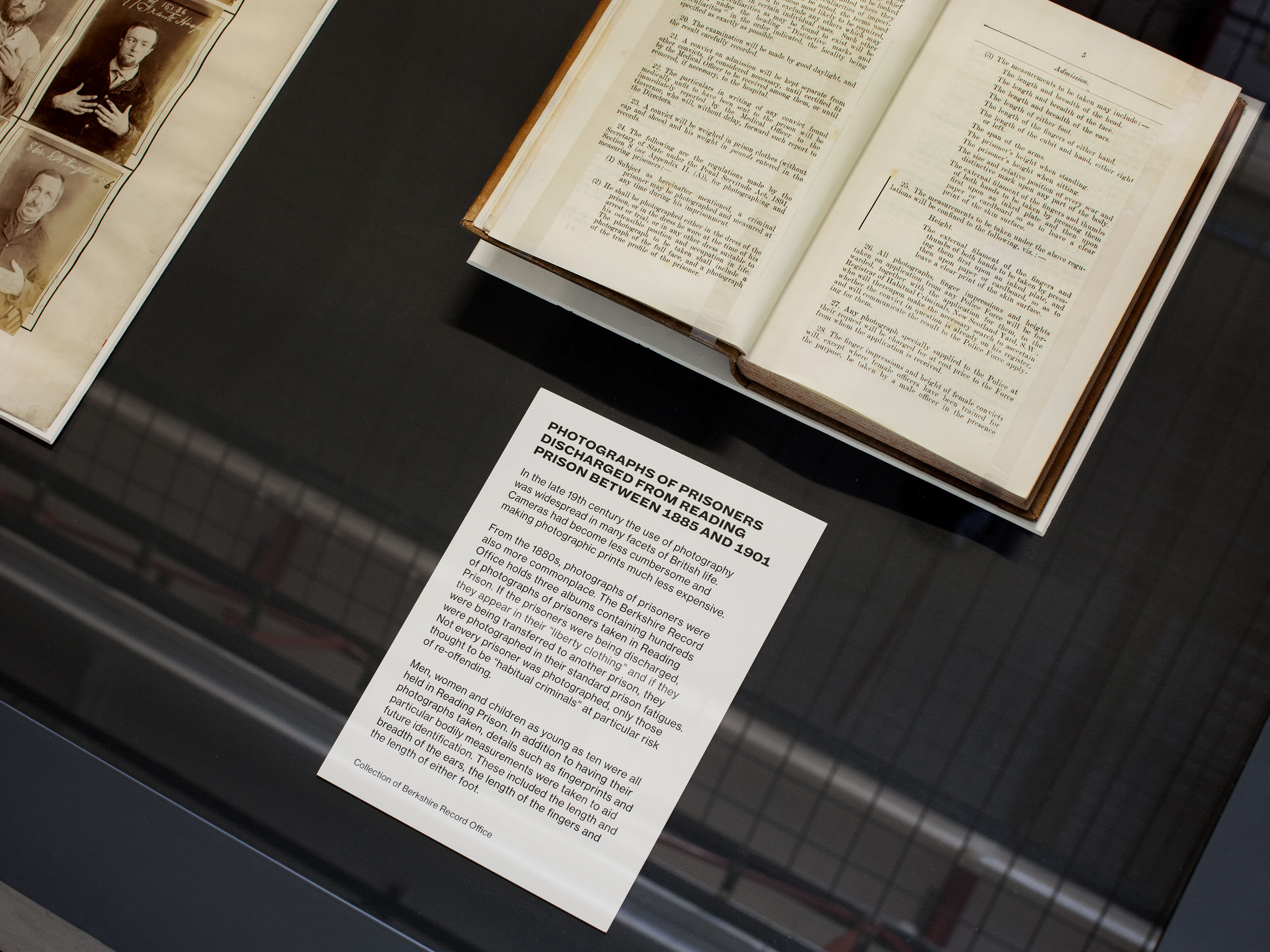
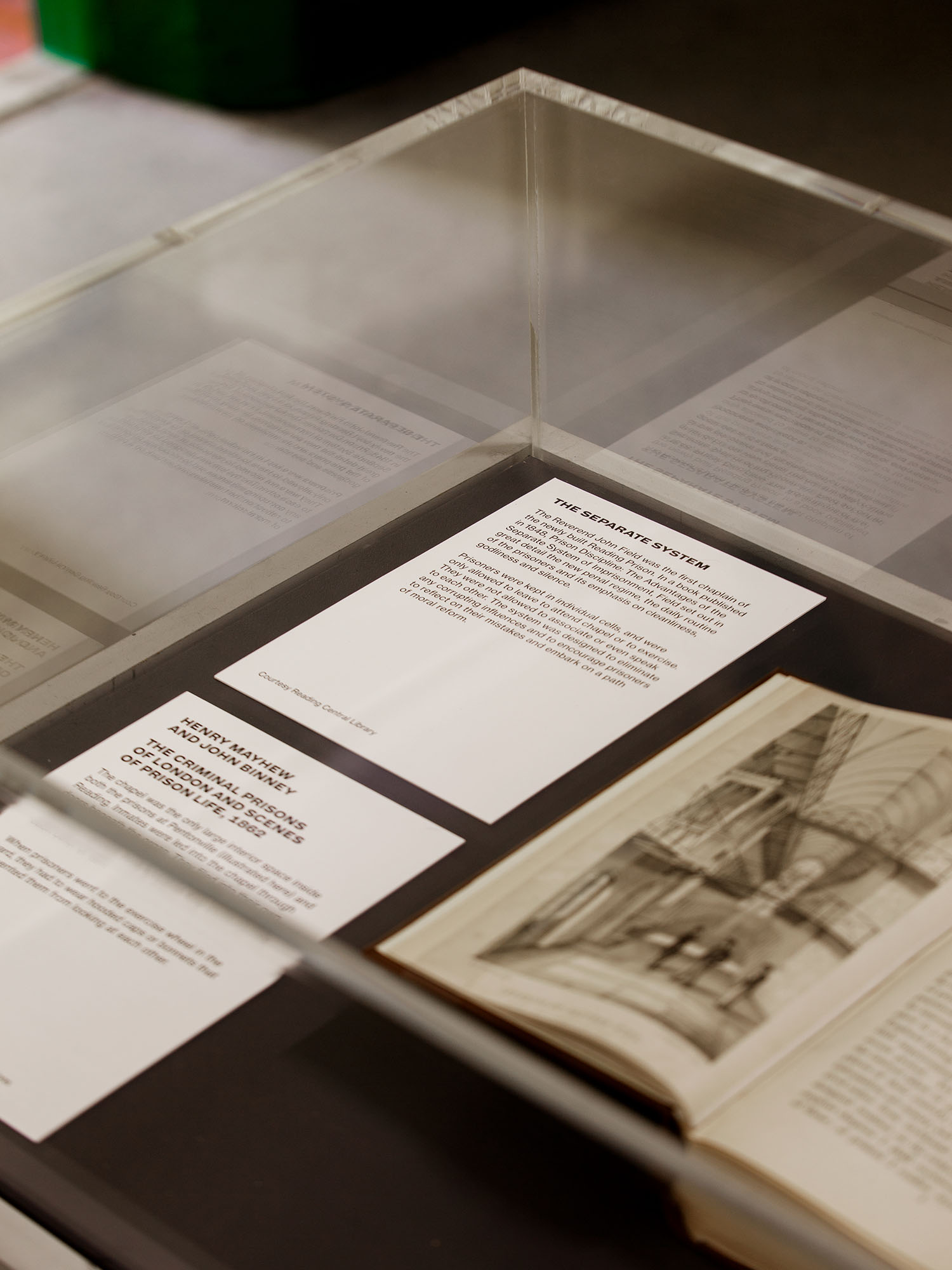

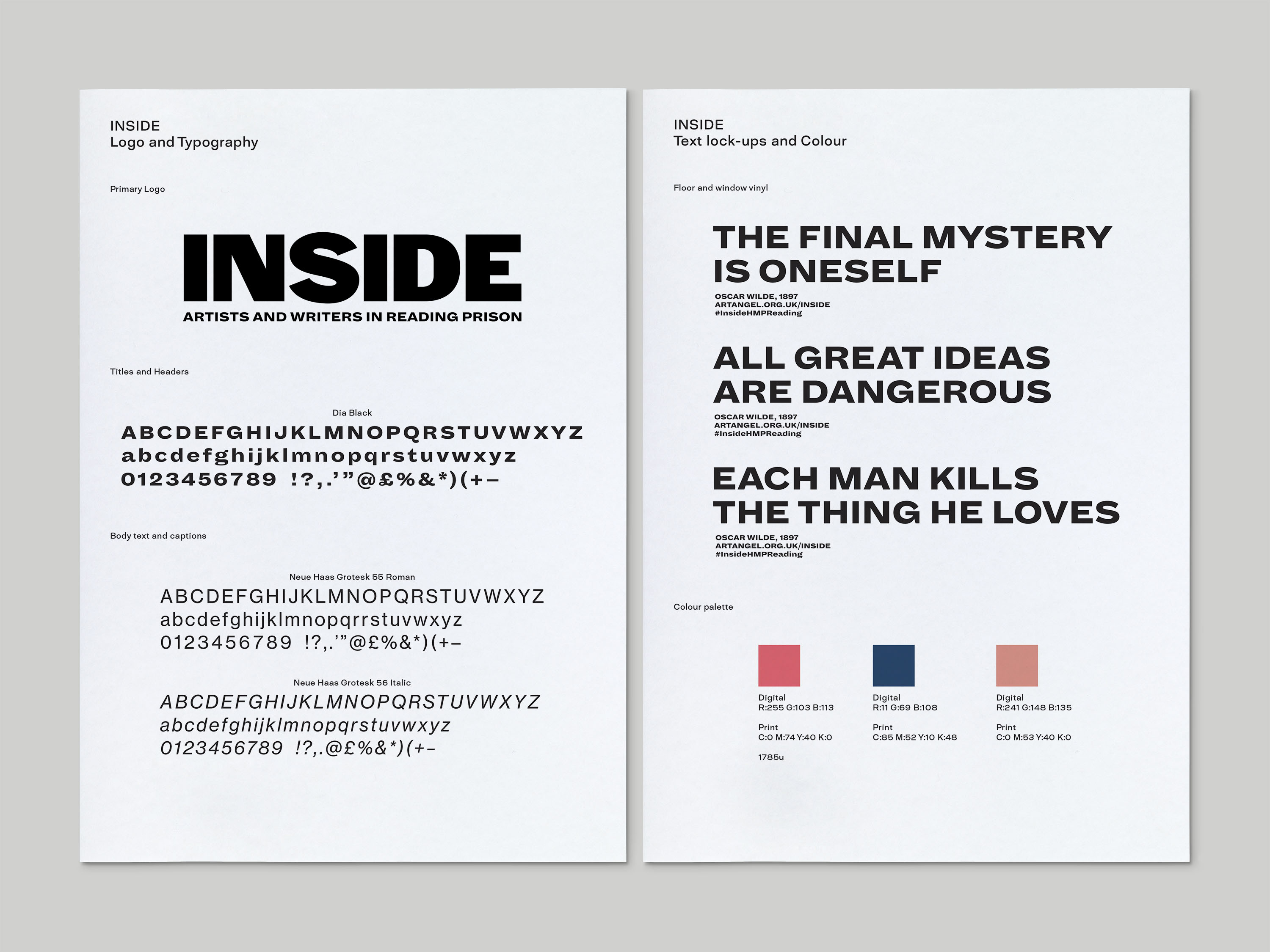
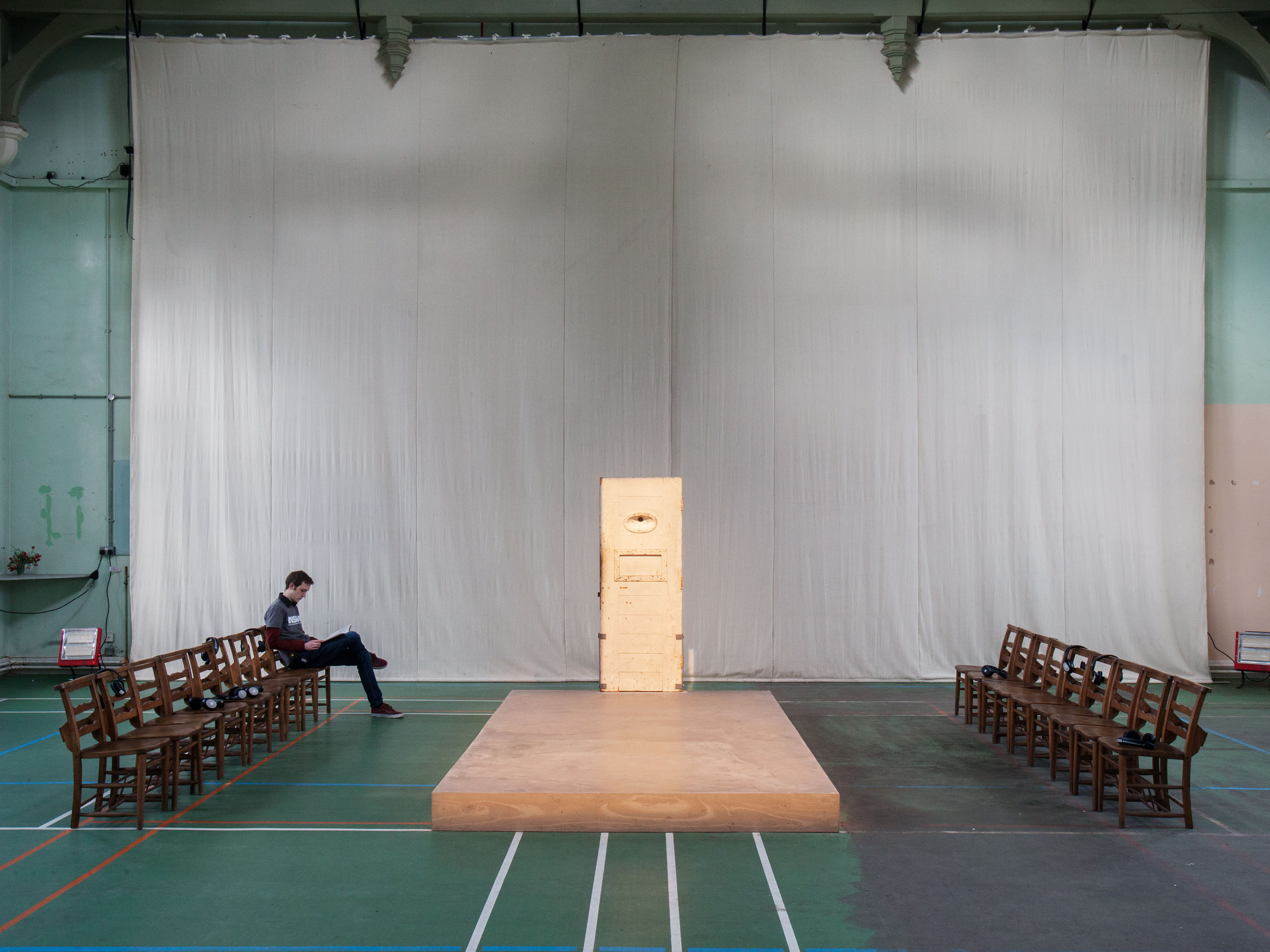
For this exhibition, Artangel invited artists to explore the nature of isolation, confinement and the works of Oscar Wilde. Held in the recently decommissioned HM Prison Reading, it included drawings, paintings, sculpture and installations alongside a series of readings from ‘De Profundis’, the letter written by Oscar Wilde at Reading Gaol whilst he was incarcerated in the late 19th century.
Our identity for the exhibition employs custom lettering influenced by historical signage examples from the prison. The heavy lettering has an imposing feel – a common style for early Victorian sans serifs. This was paired with imagery of the prison itself, brought to life in duotone, and body text in Neue Haas Grotesk.
We designed the exhibition signage, exterior graphics, promotional materials and advertising, and a guide book, which includes a history of the building, artists’ biographies, and three floor plans to lead visitors through the prison’s cavernous wings. The colours chosen for these correspond to the colour-coding of the floors in the prison.
Reading Gaol opened in 1844 and was designed by the celebrated architect George Gilbert Scott as a ‘model prison’. Its most famous inhabitant was Oscar Wilde, who was incarcerated from 1895–97 for ‘acts of gross indecency’. It was here that he wrote ‘De Profundis’, a letter to his lover Lord Alfred ‘Bosie’ Douglas, and began composing ‘The Ballad of Reading Gaol’.
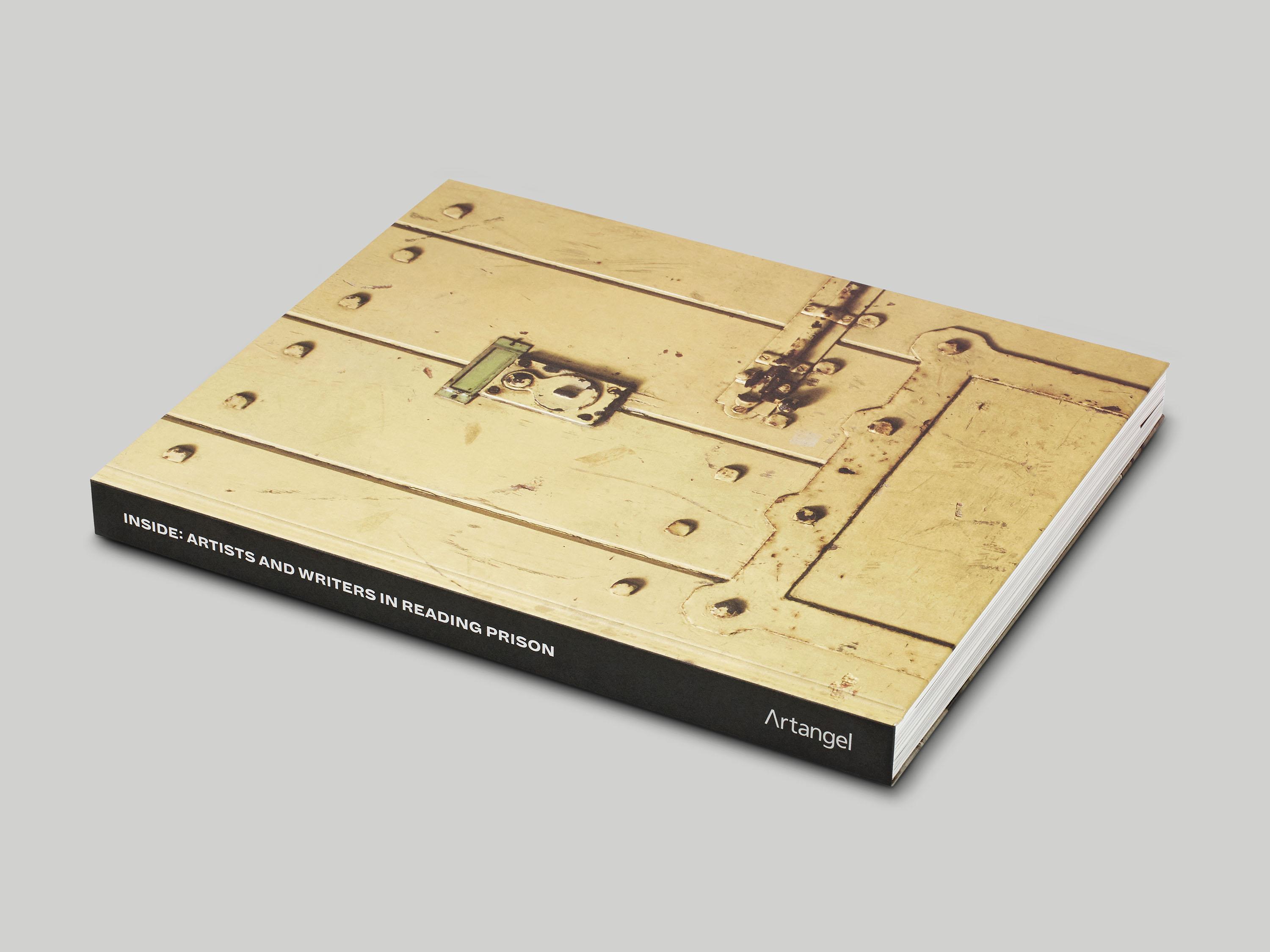
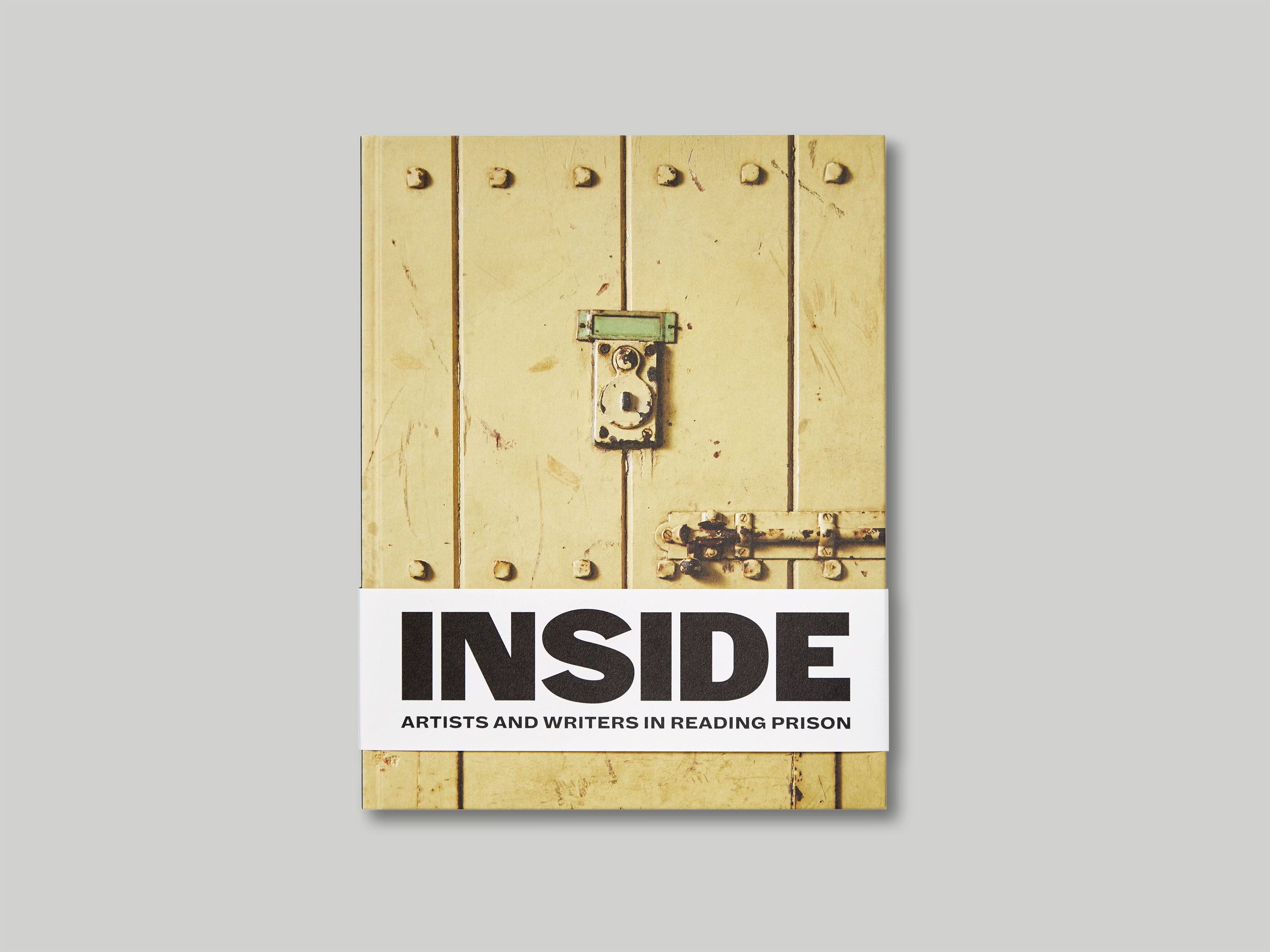




After the exhibition, we designed a companion publication for Inside which documents and expands on its works and themes. The book is presented as a full walkthrough of the exhibition, floor by floor, documenting the artists’ works and reprinting commissioned texts by others exploring themes of loneliness and separation. At the centre lays a section of selected passages from Wilde’s ‘De Profundis’ letter, printed on uncoated paper and trimmed narrower than the main book block. The endpapers feature an embossed reproduction of the ground and first floors of the original prison plans by the office of George Gilbert Scott and William Moffatt, and the front and back covers of the book depict the two sides of Oscar Wilde’s prison door; the title and other cover copy is printed on a detachable band in order to preserve the impact of these images.



